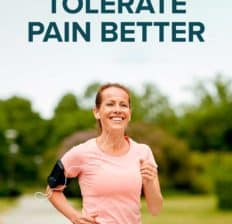This Dr. Axe content is medically reviewed or fact checked to ensure factually accurate information.
With strict editorial sourcing guidelines, we only link to academic research institutions, reputable media sites and, when research is available, medically peer-reviewed studies. Note that the numbers in parentheses (1, 2, etc.) are clickable links to these studies.
The information in our articles is NOT intended to replace a one-on-one relationship with a qualified health care professional and is not intended as medical advice.
This article is based on scientific evidence, written by experts and fact checked by our trained editorial staff. Note that the numbers in parentheses (1, 2, etc.) are clickable links to medically peer-reviewed studies.
Our team includes licensed nutritionists and dietitians, certified health education specialists, as well as certified strength and conditioning specialists, personal trainers and corrective exercise specialists. Our team aims to be not only thorough with its research, but also objective and unbiased.
The information in our articles is NOT intended to replace a one-on-one relationship with a qualified health care professional and is not intended as medical advice.
Study: Exercise May Help Deal With Pain
June 29, 2023

It’s no secret that there are a plethora of benefits of exercise, and research continues to unearth more reasons to get moving. For instance, recent studies have found that exercise can help reduce chronic disease, and as little as 10 minutes of exercise a day can make a major impact.
Now, according to research published in May 2023, it appears that people who exercise tend to have a higher pain tolerance than those who are less active or have a sedentary lifestyle.
Exercise for Pain Management
Using the population-based Tromsø Study out of Norway, researchers examined the influence of exercise on pain tolerance. With chronic pain a common problem, this study sought to determine if simply moving the body more could be a natural way to deal with pain.
The University Hospital of North Norway used self-reported data from 10,732 adults on pain tolerance and activity levels, along with follow-up. Pain was measured by putting hands in ice water and having the participants rank their pain on a scale.
What the researchers found was that people who were more physically active had higher pain tolerance than those who were sedentary and that people could increase pain tolerance over time by being physically active.
Those with more active lifestyles were found to be more tolerant to pain—and the more people said they exercised over the course of the study, the more their capacity for enduring pain grew. When both survey years were taken into account, those who had increased their levels of physical activity in the interim period reported greater pain tolerance over time. It’s possible, the authors write, that moving more frequently could be used as a “non-pharmacological pathway towards reducing or preventing chronic pain.”
The researchers ultimately concluded:
In conclusion, being physically active (PA) at either of two time points measured 7–8 years apart was associated with higher pain tolerance compared to being sedentary at both time-points. Pain tolerance increased with higher total activity levels, and more for those who increased their activity level during follow-up. This indicates that not only total PA amount matters but also the direction of change. PA did not significantly moderate pain tolerance change over time, though estimates suggested a slightly falling effect possibly due to ageing (sic). These results support increased PA levels as a possible non-pharmacological pathway towards reducing or preventing chronic pain.
This is great news for anyone looking to avoid medication to deal with pain. It’s also great news for people who exercise regularly and should be great motivation for those worried about chronic pain to get moving.
Other Ways to Manage Pain
Other proven ways to help manage pain and increase pain tolerance include:
- Physical therapy and other recovery exercises
- Yoga, acupuncture and tai chi
- Psychotherapy and behavior modification
- Relaxation therapies and self-care
- Essential oils, such as evening primrose
- Certain supplements and other approaches, like capsaicin or Epsom salt baths




